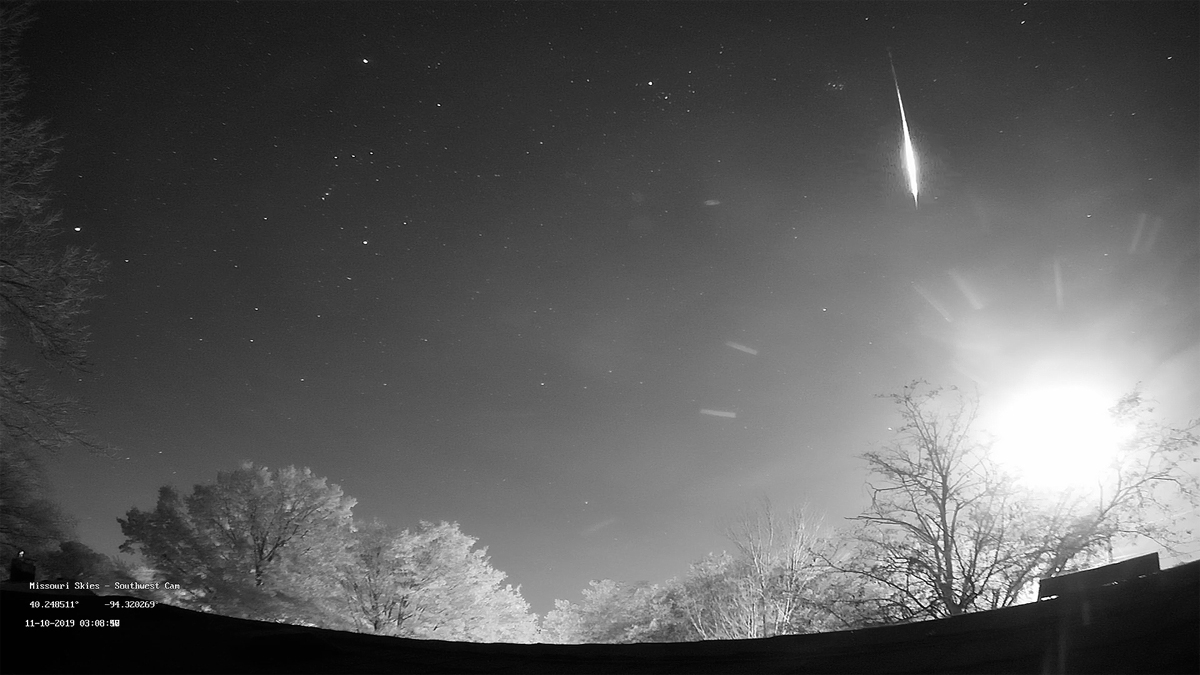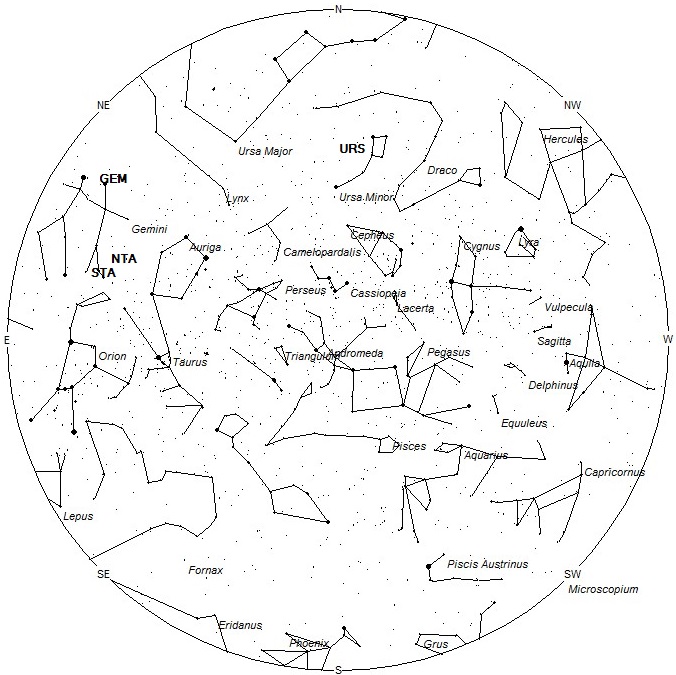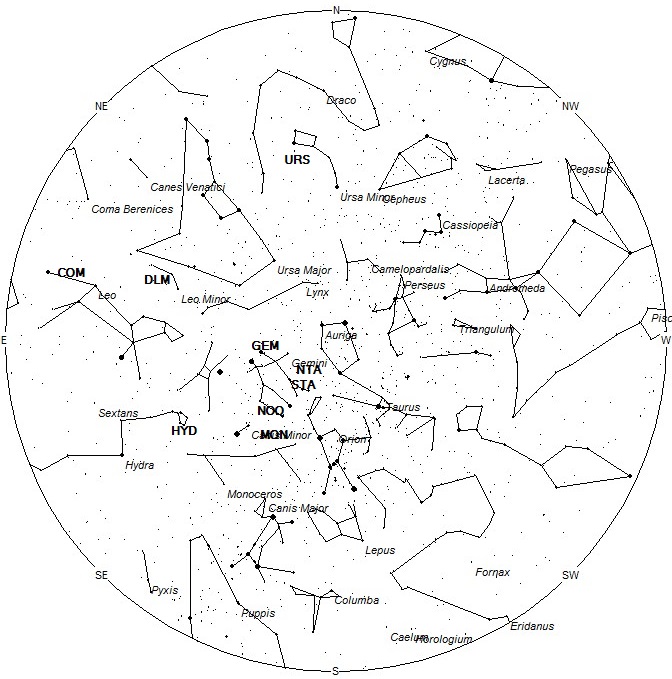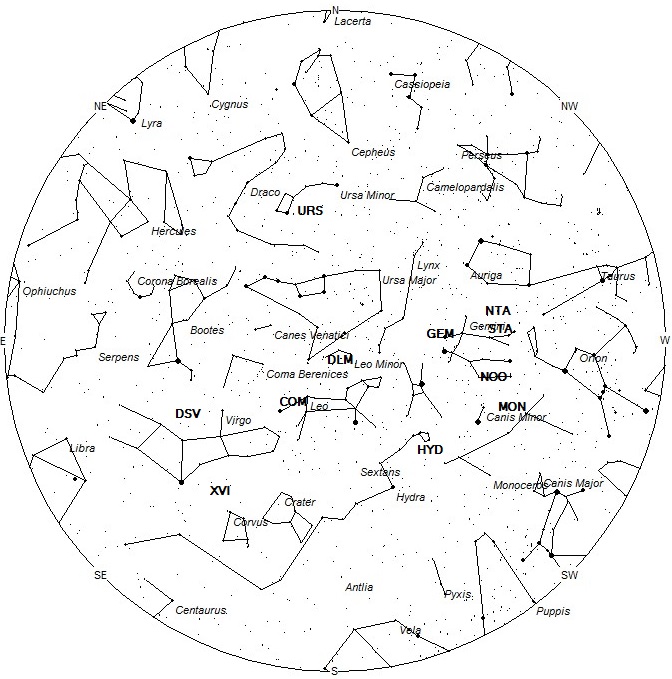
During this period the moon reaches its last quarter phase on Thursday December 19th. At this time the moon will be located 90 degrees west of the sun and will rise near 01:00 local standard time (LST). This weekend the waning gibbous moon will rise during the late evening hours and will make it difficult to view any meteor activity. The estimated total hourly meteor rates for evening observers this week is near 3 for those viewing from the southern hemisphere and 4 for those located north of the equator. For morning observers the estimated total hourly rates should be near 20 as seen from mid-northern latitudes (45N) and 12 as seen from tropical southern locations (25S). The actual rates will also depend on factors such as personal light and motion perception, local weather conditions, alertness and experience in watching meteor activity. Rates during this period are reduced due to moonlight. Note that the hourly rates listed below are estimates as viewed from dark sky sites away from urban light sources. Observers viewing from urban areas will see less activity as only the brightest meteors will be visible from such locations.
The radiant (the area of the sky where meteors appear to shoot from) positions and rates listed below are exact for Saturday night/Sunday morning December 14/15. These positions do not change greatly day to day so the listed coordinates may be used during this entire period. Most star atlases (available at science stores and planetariums) will provide maps with grid lines of the celestial coordinates so that you may find out exactly where these positions are located in the sky. A planisphere or computer planetarium program is also useful in showing the sky at any time of night on any date of the year. Activity from each radiant is best seen when it is positioned highest in the sky, either due north or south along the meridian, depending on your latitude. It must be remembered that meteor activity is rarely seen at the radiant position. Rather they shoot outwards from the radiant so it is best to center your field of view so that the radiant lies at the edge and not the center. Viewing there will allow you to easily trace the path of each meteor back to the radiant (if it is a shower member) or in another direction if it is a sporadic. Meteor activity is not seen from radiants that are located below the horizon. The positions below are listed in a west to east manner in order of right ascension (celestial longitude). The positions listed first are located further west therefore are accessible earlier in the night while those listed further down the list rise later in the night.
These sources of meteoric activity are expected to be active this week.
Detailed information of each source will continue next week when the moon will be much less of a factor.
| SHOWER | DATE OF MAXIMUM ACTIVITY | CELESTIAL POSITION | ENTRY VELOCITY | CULMINATION | HOURLY RATE | CLASS |
| RA (RA in Deg.) DEC | Km/Sec | Local Standard Time | North-South | |||
| Northern Taurids (NTA) | Nov 03 | 06:12 (093) +32 | 28 | 00:00 | <1 – <1 | II |
| Southern Taurids (STA) | Oct 29 | 06:18 (094) +25 | 27 | 00:00 | <1 – <1 | II |
| Monocerotids (MON) | Dec 13 | 07:01 (105) +08 | 41 | 01:00 | 1 – 1 | II |
| November Orionids (NOO) | Nov 29 | 07:11 (108) +15 | 43 | 01:00 | <1 – <1 | II |
| Geminids (GEM) | Dec 14 | 07:37 (114) +32 | 34 | 02:00 | 10 – 5 | I |
| sigma Hydrids (HYD) | Dec 17 | 08:44 (131) +01 | 61 | 03:00 | 1- 1 | II |
| December Leonis Minorids (DLM) | Dec 21 | 10:19 (155) +32 | 63 | 04:00 | 1- <1 | II |
| Comae Berenicids (COM) | Dec 16 | 11:35 (174) +19 | 65 | 05:00 | 1 – <1 | II |
| December chi Virginids (XVI) | Dec 19 | 12:38 (190) -10 | 69 | 06:00 | <1 – <1 | IV |
| December Sigma Virginids (DSV) | Dec 14 | 13:27 (202) +05 | 68 | 07:00 | <1 – <1 | IV |
| Ursids (URS) | Dec 22 | 13:39 (205) +76 | 44 | 07:00 | <1 – <1 | I |
 American Meteor Society
American Meteor Society



Just saw a large and bright meteor streak through the sky and burn out toward the ground in Venice FL while traveling on I-75 near exit 190
Me and my wife where driving home from Charlotte tonight and saw lots of activity over the Spartanburg sky’s.
I saw a red streak in the sky Monday night. Wasn’t sure what it may have been. At first I wasn’t sure if it may have been a meteor or is someone shot a flare gun. But it was interesting. I live in Port Charlotte, FL.
Was that December 16?
I saw that same meteor real low to the ground if you’re not as good as the guy above me I think roughly a hundred that night easy
Saw big meteor near Tyson’s Corner in NOVA at about 1835. Very clear and bright above city lights.
My daughter and I as well as many others in line for a Static-X concert in Portland OR., Hawthorne St. saw a huge streak something bright falling around 6:30 – 6:45. Dec 16.
We were facing North, it was falling in a NE direction. Super bright.
Matt B
I guess I saw the same thing… Around 6:45 PM (GMT+6).
I just saw a white, round object leaving a plume traveling at a high rate of speed. (12/19/2019 6:45am NC) It then made a bright flash and continued until Could no longer see it. However, after the bright flash there was just a very feint plume trail which disappeared.